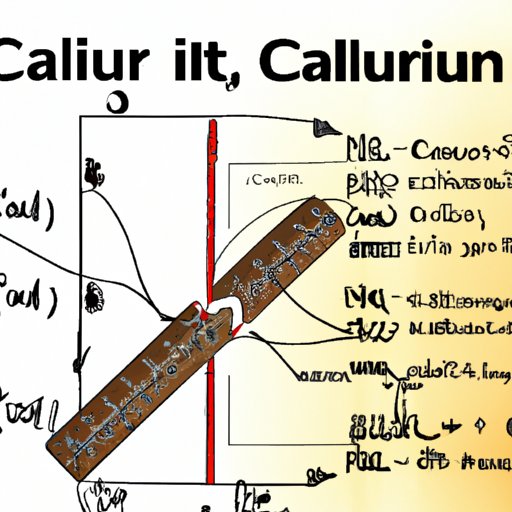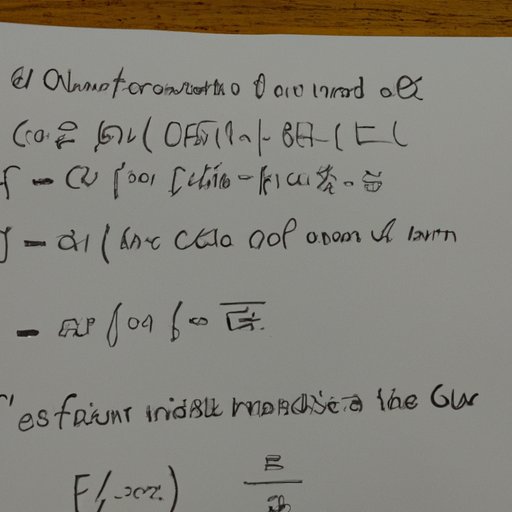Introduction
Calculus is a branch of mathematics that deals with derivatives, integrals, limits, and infinite series. It is used in a wide range of fields, from physics and astronomy to economics and engineering. The invention of calculus has been credited to two mathematicians: Isaac Newton and Gottfried Leibniz. In this article, we will explore the lives and works of these two men, as well as their respective contributions to the development of calculus.
Biographical Timeline of the Life of the Inventor of Calculus
Isaac Newton was born in 1643 in Lincolnshire, England. He was educated at Trinity College, Cambridge and went on to become one of the most influential scientists of all time. His scientific discoveries included the laws of motion and universal gravitation, which formed the basis for modern physics. He is also credited with the invention of calculus, which he developed in the late 1660s and early 1670s.
Gottfried Leibniz was born in 1646 in Leipzig, Germany. He was educated at the University of Leipzig and went on to become one of the most influential philosophers and mathematicians of all time. His scientific discoveries included the development of the binary number system and the notation of differential and integral calculus. He is also credited with the invention of calculus, which he developed in the late 1670s and early 1680s.

Comparison of the Two Main Inventors of Calculus
The contributions of Newton and Leibniz to the development of calculus have long been debated. While they both developed similar methods of calculus independently, there are some differences between their approaches. Some areas of agreement include the use of infinitesimals, the notion of a limit, and the proof of the fundamental theorem of calculus. Areas of disagreement include the use of the notation for derivatives and the definition of the derivative.
Major Works that Led to the Development of Calculus
One of Newton’s most important works was his book Principia Mathematica, published in 1687. This work outlined his three laws of motion, as well as the law of universal gravitation. In addition, it contained the beginnings of calculus, including the use of infinitesimals and the proof of the fundamental theorem of calculus.
Leibniz’s most important work was his book Nova Methodus, published in 1684. This work outlined his approach to calculus, including the use of the notation for derivatives and the definition of the derivative. In addition, it contained the beginnings of calculus, including the use of infinitesimals and the proof of the fundamental theorem of calculus.

Impact of Calculus on Science and Technology
Calculus has had a significant impact on science and technology. In physics, calculus is used to understand the motion of objects and the behavior of forces. In astronomy, it is used to calculate the orbits of planets and other celestial bodies. In economics, it is used to analyze markets and predict trends. In engineering, it is used to design machines and structures.

Current State of Research in Calculus
Calculus research is ongoing in many areas. Applications of calculus are being explored in a wide range of fields, from medicine to finance. Computational calculus is being used to solve complex mathematical problems. Mathematical modeling is being used to study complex systems.
Conclusion
In conclusion, we can see that the invention of calculus is credited to two mathematicians: Isaac Newton and Gottfried Leibniz. While they both developed similar methods of calculus independently, there are some differences between their approaches. Their major works, such as Principia Mathematica and Nova Methodus, laid the foundation for the development of calculus. Today, calculus has a significant impact on science and technology, and research in calculus is still ongoing.
(Note: Is this article not meeting your expectations? Do you have knowledge or insights to share? Unlock new opportunities and expand your reach by joining our authors team. Click Registration to join us and share your expertise with our readers.)
